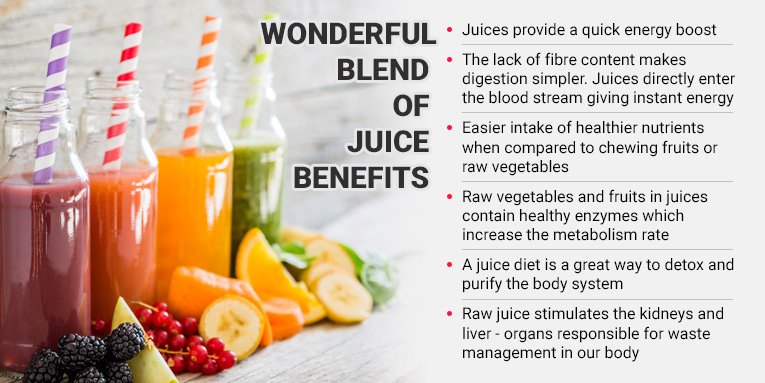Juicing has become a popular trend among health enthusiasts. Juicing involves extracting the liquid from fruits and vegetables, leaving behind the pulp. It is a great way to increase your daily intake of fruits and vegetables. However, not all vegetables are suitable for juicing. Some vegetables can cause serious health problems if consumed in juice form. In this article, we will discuss which vegetables should not be juiced and why.
What vegetables should not be juiced?
- Potatoes: Potatoes are high in starch and low in nutrients. Juicing potatoes can cause a rapid increase in blood sugar levels, which is dangerous for people with diabetes.
- Eggplant: Eggplants contain solanine, a toxin that can cause digestive problems and headaches. It is not recommended to juice eggplants.
- Cabbage: Cabbage is a cruciferous vegetable that can cause gas and bloating when consumed in juice form. It is better to eat cabbage in cooked or raw form.
- Rhubarb: Rhubarb contains oxalic acid, which can cause kidney stones and other health problems. It is better to avoid juicing rhubarb.
- Tomatoes: Tomatoes are acidic and can cause stomach problems when consumed in juice form. It is better to eat tomatoes in cooked or raw form.
May you need: juicing or blending which is better
Why should these vegetables not be juiced?
Juicing these vegetables can cause several health problems. Potatoes, for example, are high in starch, which can cause a rapid increase in blood sugar levels. This can be dangerous for people with diabetes. Eggplants contain solanine, a toxin that can cause digestive problems and headaches. Cabbage can cause gas and bloating when consumed in juice form. Rhubarb contains oxalic acid, which can cause kidney stones and other health problems. Tomatoes are acidic and can cause stomach problems when consumed in juice form.
What are the alternatives?
There are several alternatives to these vegetables that are safe for juicing. Some of these include kale, spinach, cucumber, carrots, beets, and celery. These vegetables are high in nutrients and can be juiced safely.
What vegetables can be juiced?
These are just a few examples, and there are many more vegetables that can be juiced. Feel free to experiment with different combinations and proportions based on your taste preferences and nutritional goals. Remember to use fresh and high-quality produce for the best results.
There is a wide range of vegetables that can be juiced. Here are some common vegetables that are often used for juicing:
- Leafy greens: Spinach, kale, Swiss chard, collard greens, and lettuce are rich in vitamins, minerals, and antioxidants. They are popular choices for juicing due to their nutrient density.
- Celery: Celery has a high water content and a mild flavor, making it a refreshing addition to juices. It is also known for its potential detoxifying properties.
- Cucumbers: Cucumbers are hydrating and have a mild, refreshing taste. They can add a pleasant crunch and extra hydration to your juices.
- Carrots: Carrots are sweet and rich in beta-carotene, which the body converts into vitamin A. They are often juiced for their vibrant color and nutritional benefits.
- Beets: Beets are known for their deep red color and earthy flavor. They are packed with antioxidants and are often used to support liver health.
- Bell peppers: Bell peppers, whether red, yellow, or green, add a tangy flavor and a boost of vitamin C to juices. They come in different varieties and can add a pop of color to your concoctions.
- Tomatoes: Tomatoes are technically fruits but are commonly used as vegetables. They can add a tangy and slightly sweet flavor to juices and are a good source of vitamins A and C.
- Ginger: While ginger is not a vegetable, it is a popular addition to vegetable juices for its spicy and invigorating flavor. It can also have potential health benefits, including aiding digestion.
Read: The 10 Best Vegetables for Juicing: A Comprehensive List
How to prepare vegetables for juicing?
Juicing vegetables can be a convenient and efficient way to boost your daily nutrient intake. However, to make the most of your juicing experience, it is crucial to prepare your vegetables properly. Here are some essential guidelines to follow:
1. Choose fresh and organic vegetables
Opt for fresh and organic produce whenever possible to ensure you are getting the highest quality vegetables. If organic options are unavailable, make sure to thoroughly wash and scrub your vegetables before juicing.
2. Wash and chop your vegetables
Prior to juicing, rinse your vegetables under running water and scrub them to remove any dirt or debris. Additionally, chop your vegetables into small pieces to facilitate the juicing process.
3. Remove any inedible parts
Certain vegetables have inedible parts such as tough stems or skins. Prior to juicing, be sure to remove these parts to prevent any damage to your juicer.
4. Experiment with different combinations
To enjoy a variety of flavors and maximize nutritional benefits, try combining different vegetables in your juicer. For example, you can create a nutritious green juice by combining spinach, kale, celery, cucumber, and apple.
5. Clean your juicer
After each use, it is vital to thoroughly clean your juicer to prevent the buildup of bacteria. Disassemble your juicer and wash each part in warm, soapy water. Utilize a small brush to clean any hard-to-reach areas.
Nutritional benefits of juicing vegetables
It’s worth mentioning that while juicing can offer nutritional benefits, it’s important to maintain a balanced diet that includes whole vegetables, fruits, whole grains, lean proteins, and healthy fats. Juicing should not be a substitute for consuming whole foods, as whole vegetables also provide essential dietary fiber. Additionally, it’s advisable to consult with a healthcare professional or a registered dietitian before making significant changes to your diet.

Juicing vegetables can provide several nutritional benefits. Here are some of the advantages:
1. Increased nutrient absorption
Juicing helps break down the cellular walls of vegetables, making it easier for your body to absorb the nutrients. This is especially beneficial for individuals with compromised digestion or absorption issues.
2. Higher vitamin and mineral intake
Juicing allows you to consume a larger quantity of vegetables in a concentrated form. This means you can obtain a higher intake of essential vitamins and minerals such as vitamin C, vitamin A, potassium, magnesium, and folate.
3. Antioxidant boost
Vegetables are rich in antioxidants that help protect your body against oxidative stress and cellular damage. Juicing allows you to access a wide variety of antioxidant compounds found in different vegetables, which can enhance your overall antioxidant intake.
4. Hydration
Juicing vegetables can contribute to your daily fluid intake, helping to keep your body hydrated. Vegetables with high water content, such as cucumber and celery, are particularly hydrating when juiced.
5. Digestive health
Juicing removes the insoluble fiber present in vegetables, making it easier for your body to digest and absorb the nutrients. This can be beneficial for individuals with sensitive digestive systems or those who have difficulty digesting fiber.
6. Weight management
Juicing vegetables can be a helpful addition to a weight management plan. It allows you to consume a large volume of vegetables while minimizing the calorie content. Additionally, the high fiber content in some vegetables can promote feelings of fullness and reduce overeating.
7. Detoxification
Some proponents of juicing claim that it supports detoxification by providing a concentrated source of nutrients that assist the body’s natural detoxification processes. However, it’s important to note that the liver and kidneys are primarily responsible for detoxification, and juicing alone is unlikely to significantly impact this process.
What fruits should not be juiced?
While most fruits can be juiced, there are a few exceptions that are not typically juiced or are not suitable for juicing. Here are some fruits that are generally not recommended for juicing:
- Bananas: Bananas have a thick, creamy texture that doesn’t juice well. They are best consumed as is or blended into smoothies.
- Avocados: Similar to bananas, avocados have a high fat content and a creamy texture that doesn’t lend itself well to juicing. They are better used in recipes or enjoyed on their own.
- Citrus fruits with thick peels: Fruits such as oranges, grapefruits, and tangerines have thick, bitter peels that are not typically juiced. Instead, their juice is extracted by squeezing or using a citrus juicer.
- Pomegranates: Pomegranates have a unique structure with seeds surrounded by juicy sacs called arils. While the arils can be juiced, it can be a bit challenging and time-consuming. Many people prefer to consume pomegranate juice that is readily available in stores.
- Stone fruits with large pits: Fruits such as peaches, plums, cherries, and apricots have large pits or stones that make juicing difficult. It’s usually more practical to eat these fruits as a whole or use them in smoothies.
FAQ on Which Vegetables Should Not Be Juiced
Why should you avoid juicing potatoes?
Potatoes are high in starch, which can cause a rapid increase in blood sugar levels. This can be dangerous for people with diabetes.
Can you juice eggplants?
Eggplants contain solanine, a toxin that can cause digestive problems and headaches. It is not recommended to juice eggplants.
Why should you avoid juicing rhubarb?
Rhubarb contains oxalic acid, which can cause kidney stones and other health problems.
How should you prepare vegetables for juicing?
Before juicing vegetables, it is important to wash them thoroughly to remove any dirt and bacteria. Some vegetables, such as carrots and beets, should be peeled before juicing. It is also important to remove any seeds or pits from the vegetables before juicing.
What vegetables can i juice?
There are numerous vegetables that you can juice. Some common vegetables suitable for juicing include leafy greens like spinach and kale, celery, cucumbers, carrots, beets, bell peppers, tomatoes, and ginger. These vegetables offer a range of flavors, nutrients, and health benefits when juiced. Feel free to experiment with different combinations to find your preferred taste and maximize the nutritional value of your juices.
Conclusion
While juicing can be an excellent way to increase your intake of fruits and vegetables, not all vegetables are suitable for juicing. Some vegetables, such as potatoes, eggplants, cabbage, rhubarb, and tomatoes, can cause serious health problems if consumed in juice form. It is important to be aware of these vegetables and avoid juicing them. Instead, opt for safer alternatives that are high in nutrients and can be juiced safely. Remember to wash and prepare the vegetables properly before juicing to ensure maximum safety and nutrition. By juicing safely, you can enjoy the many health benefits of fruits and vegetables without putting your health at risk.

